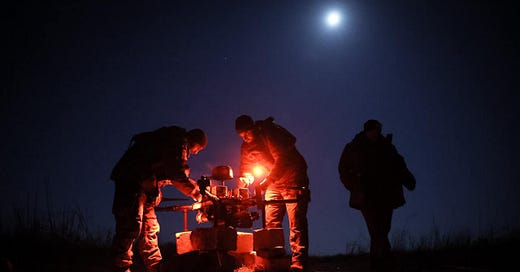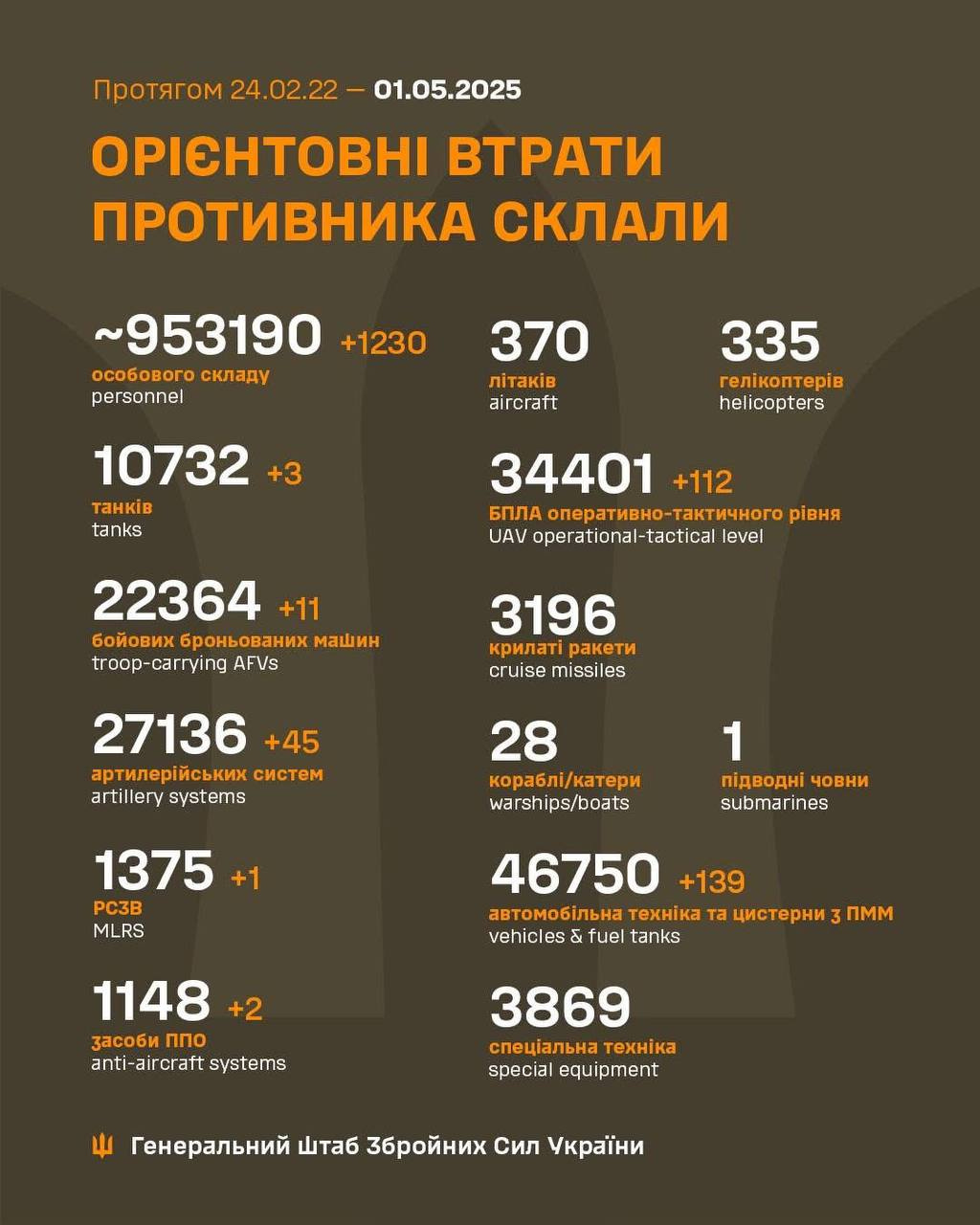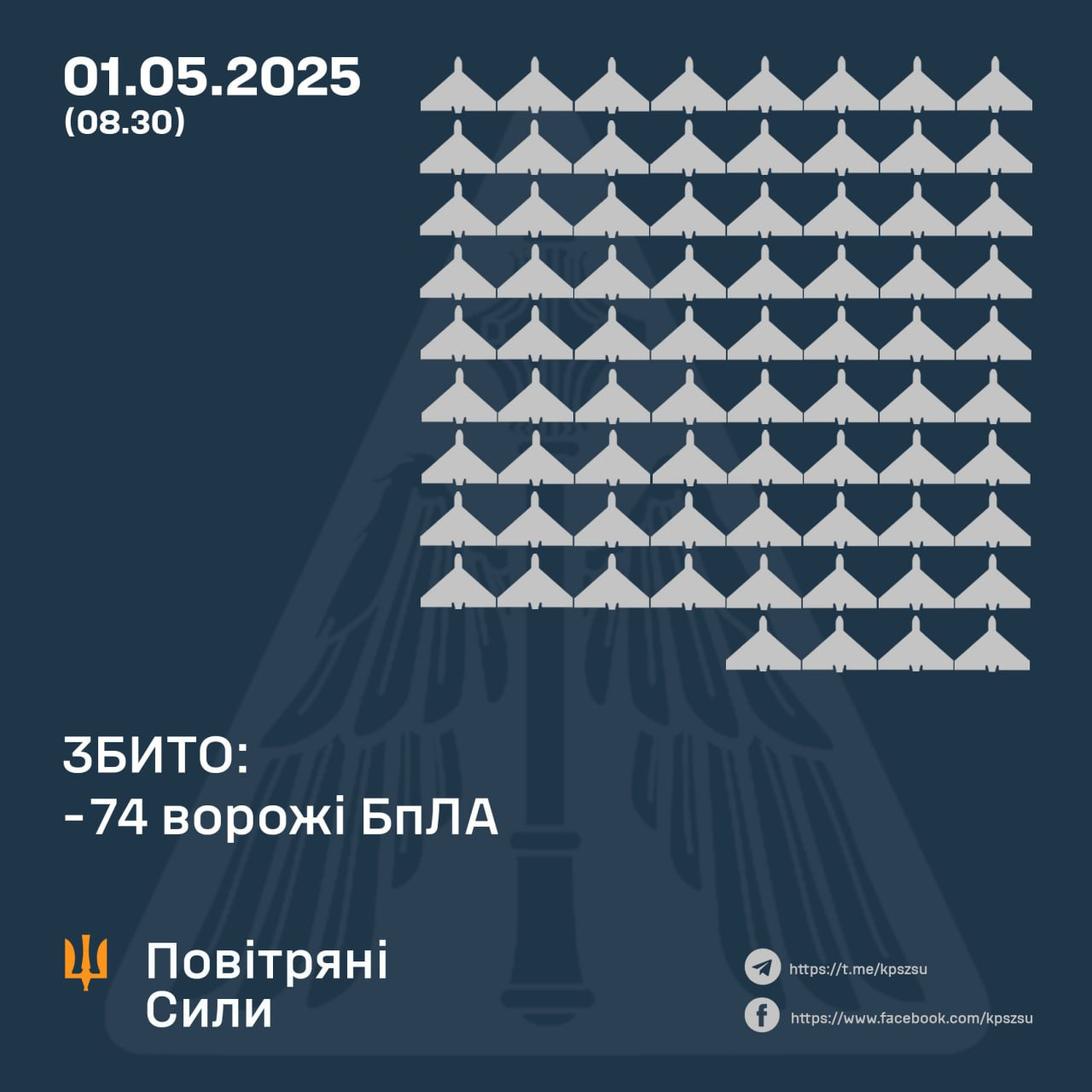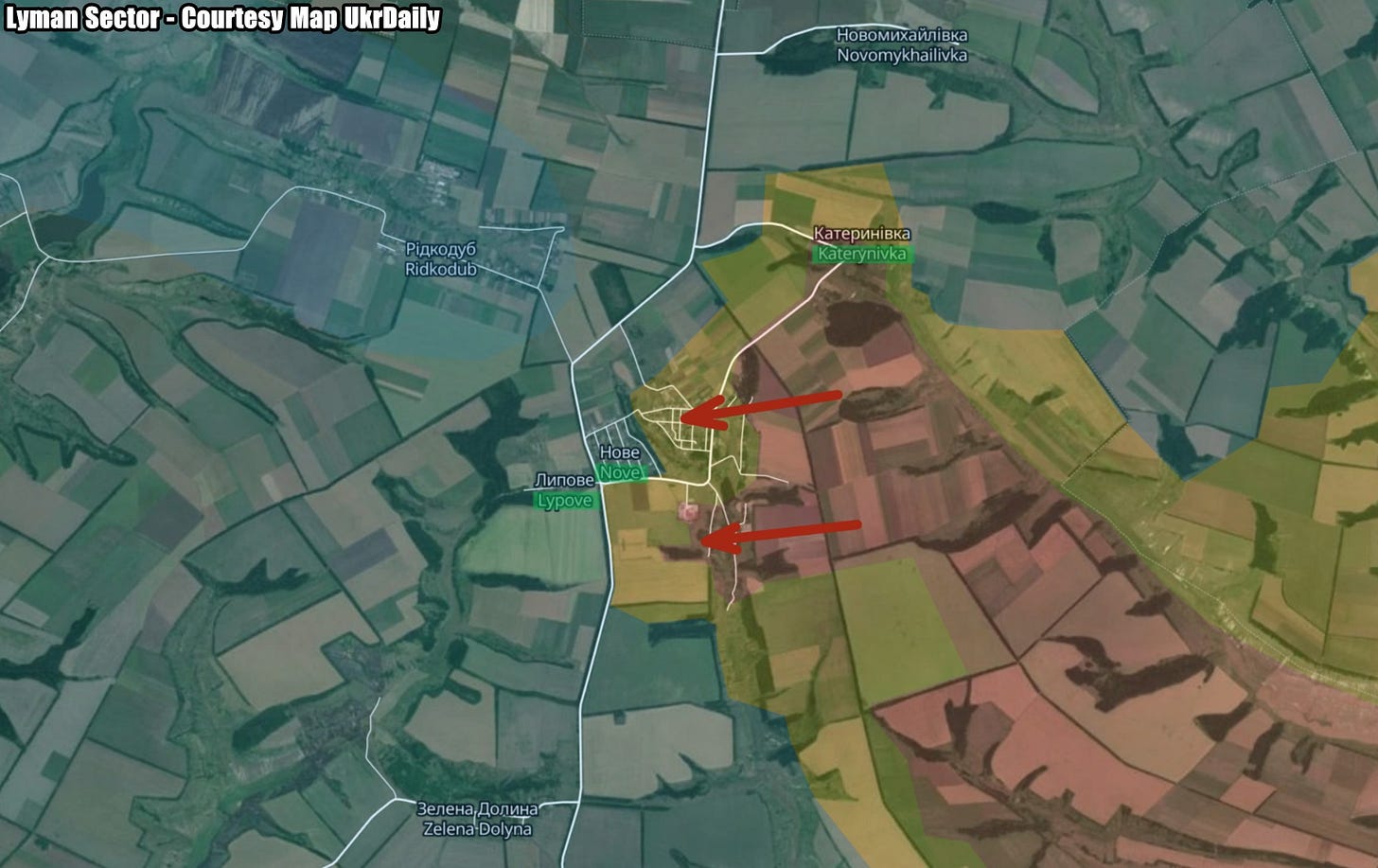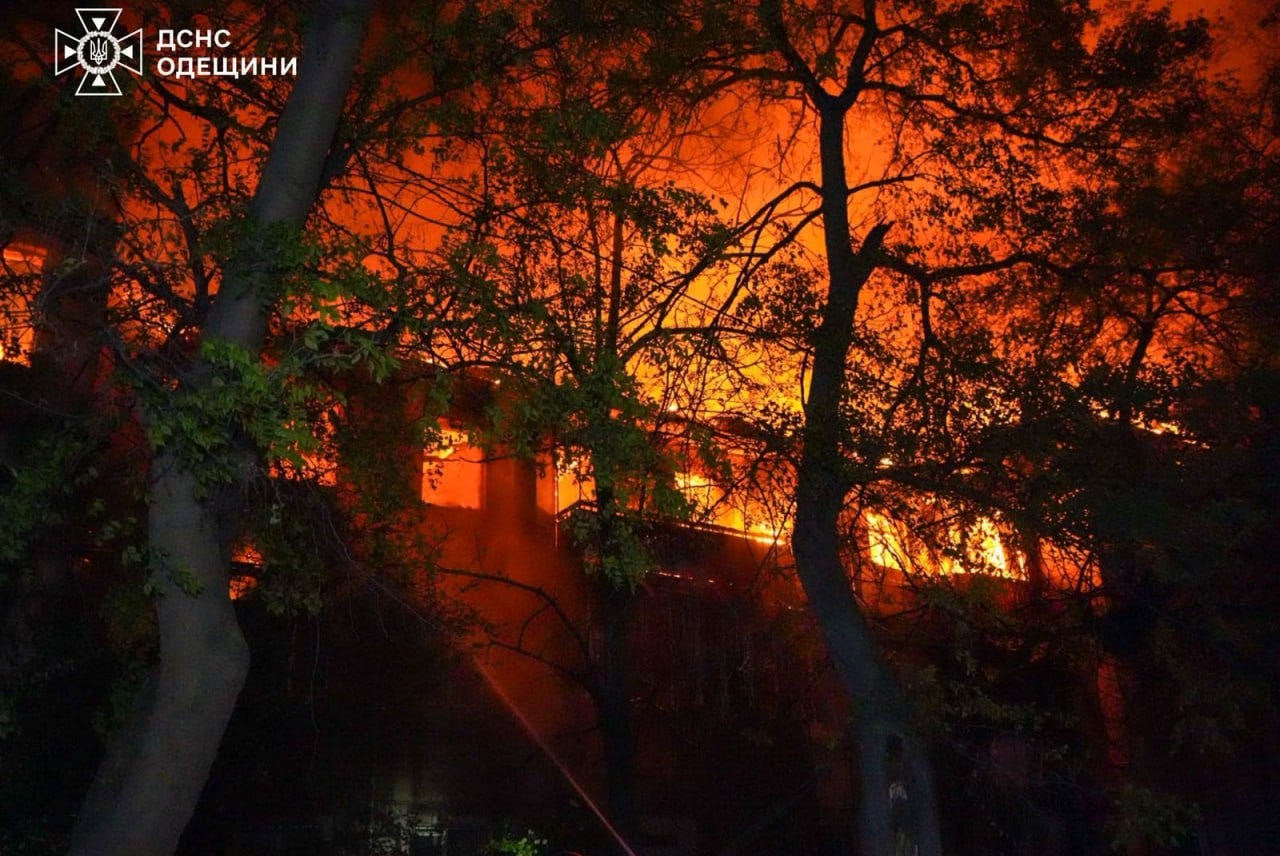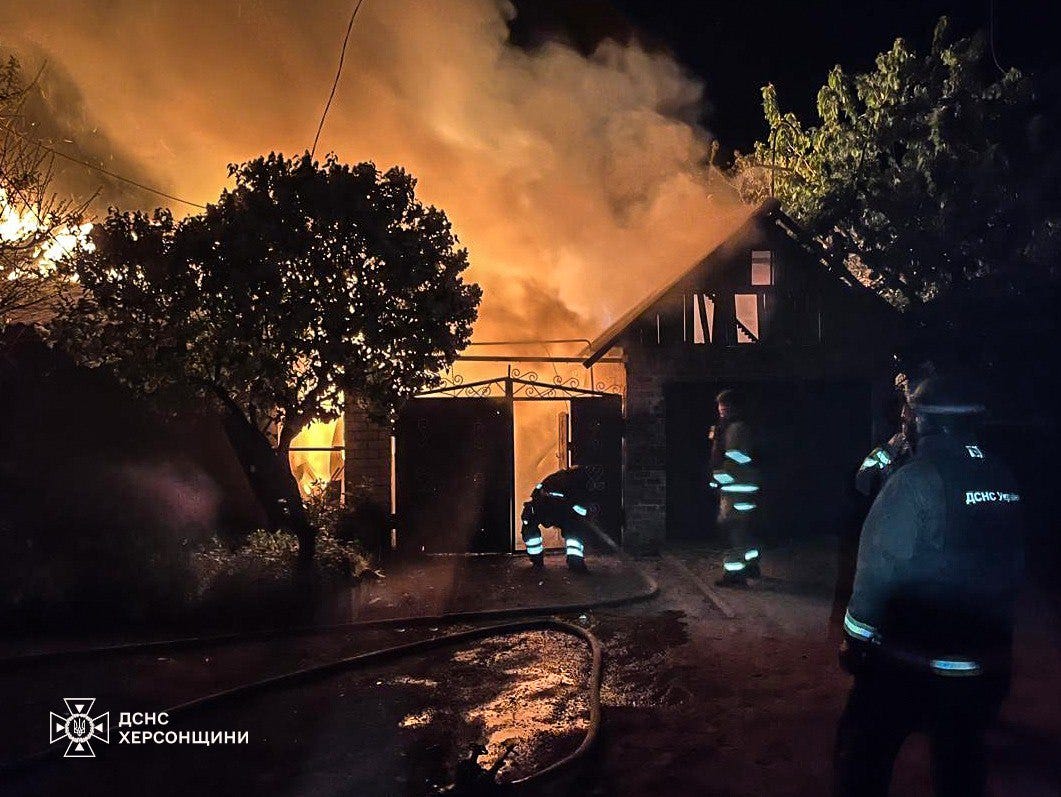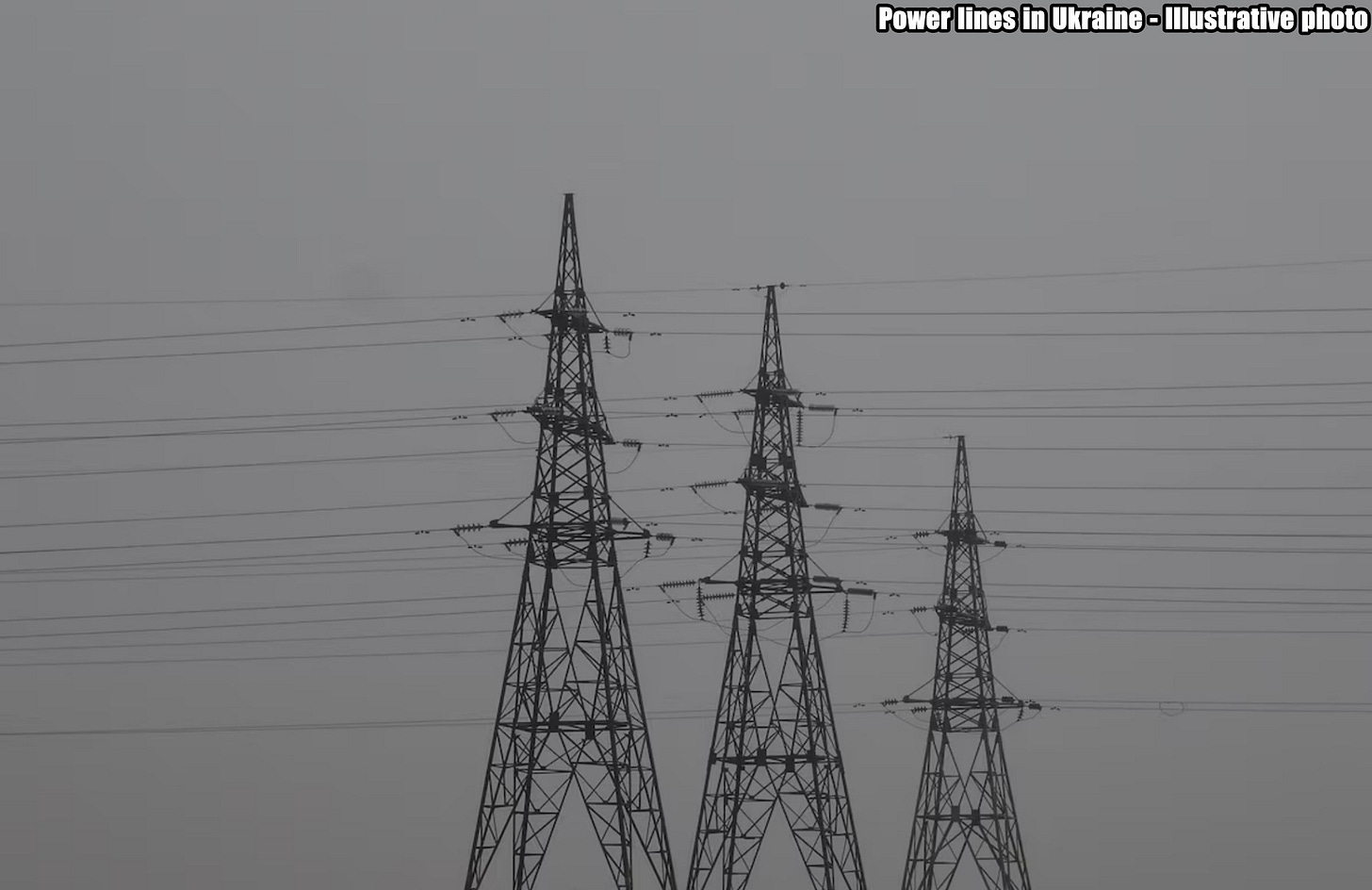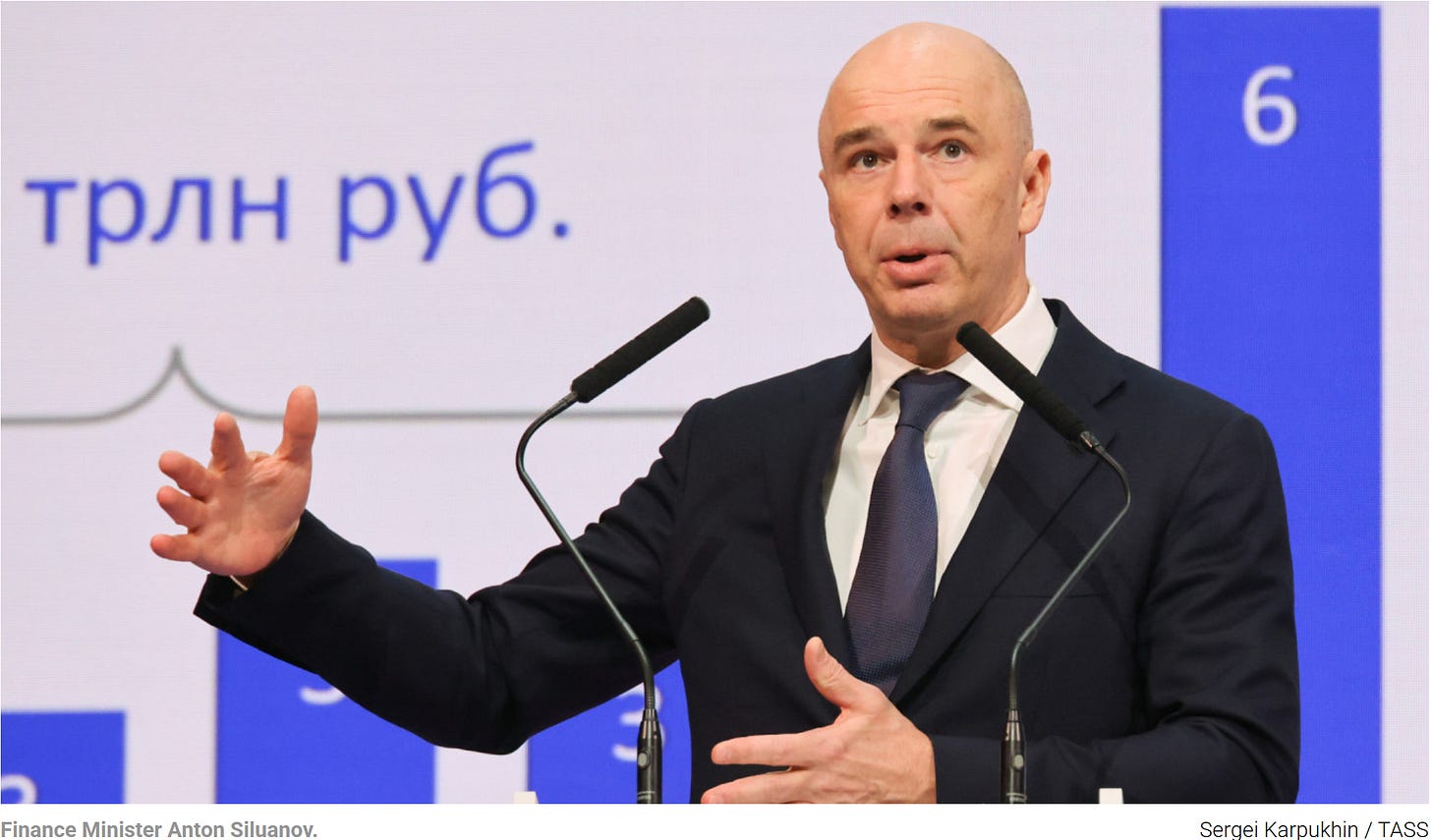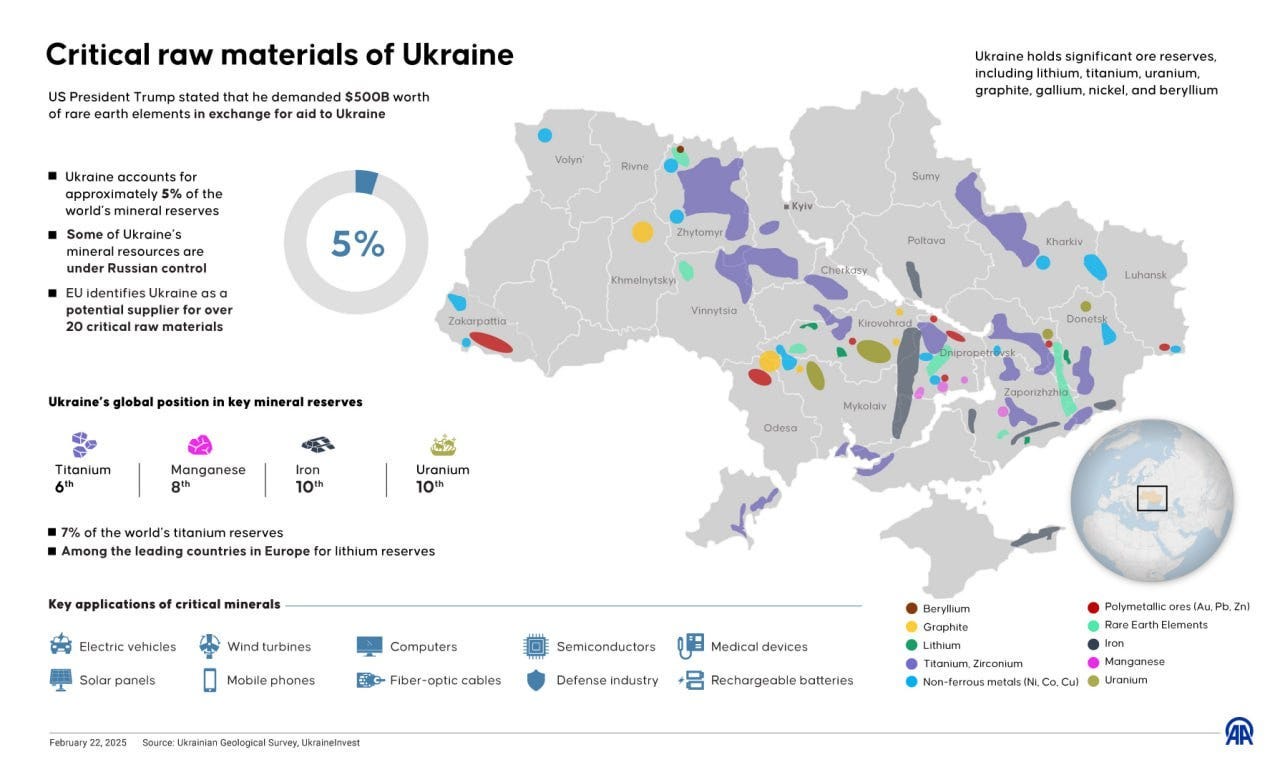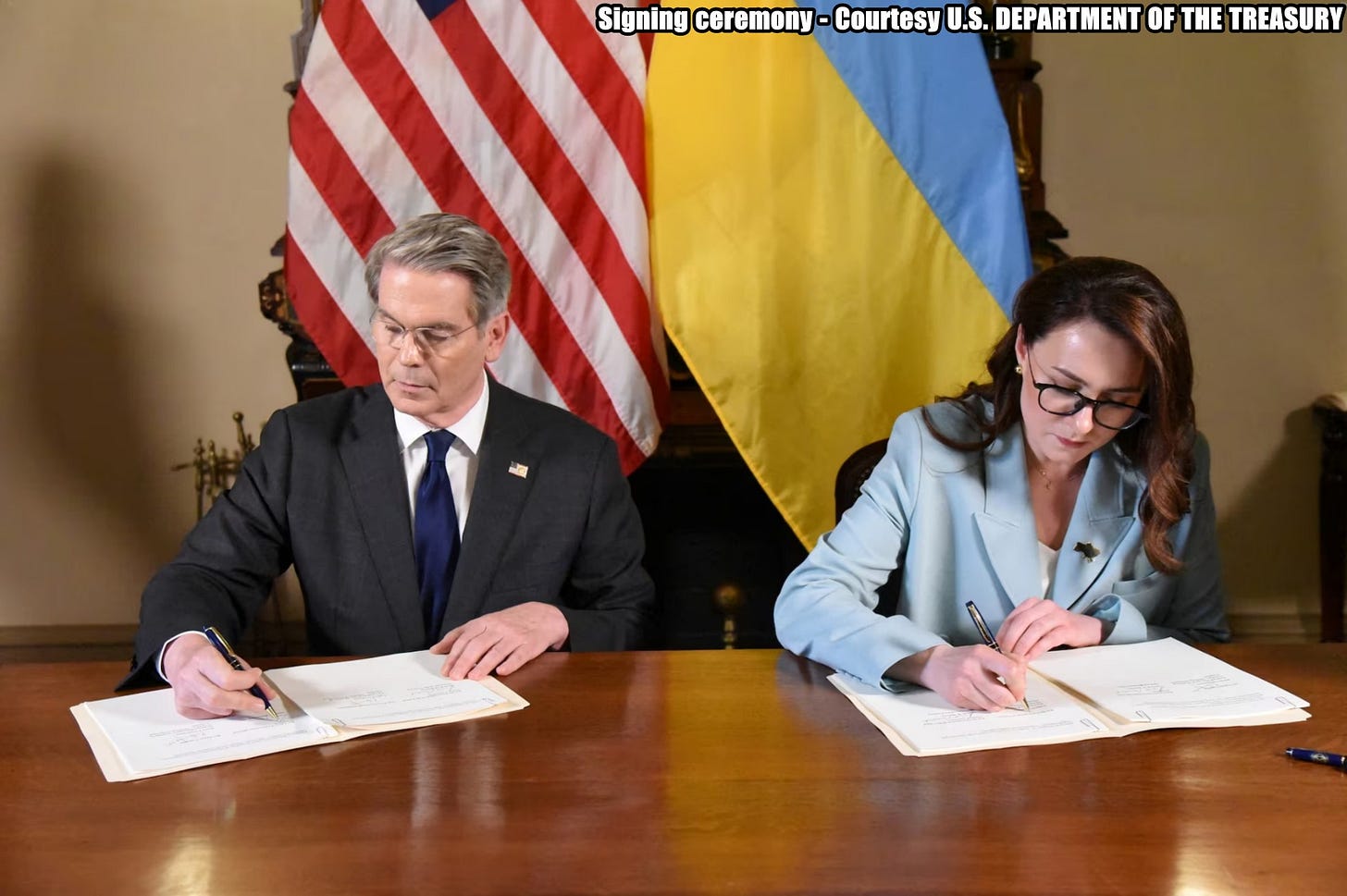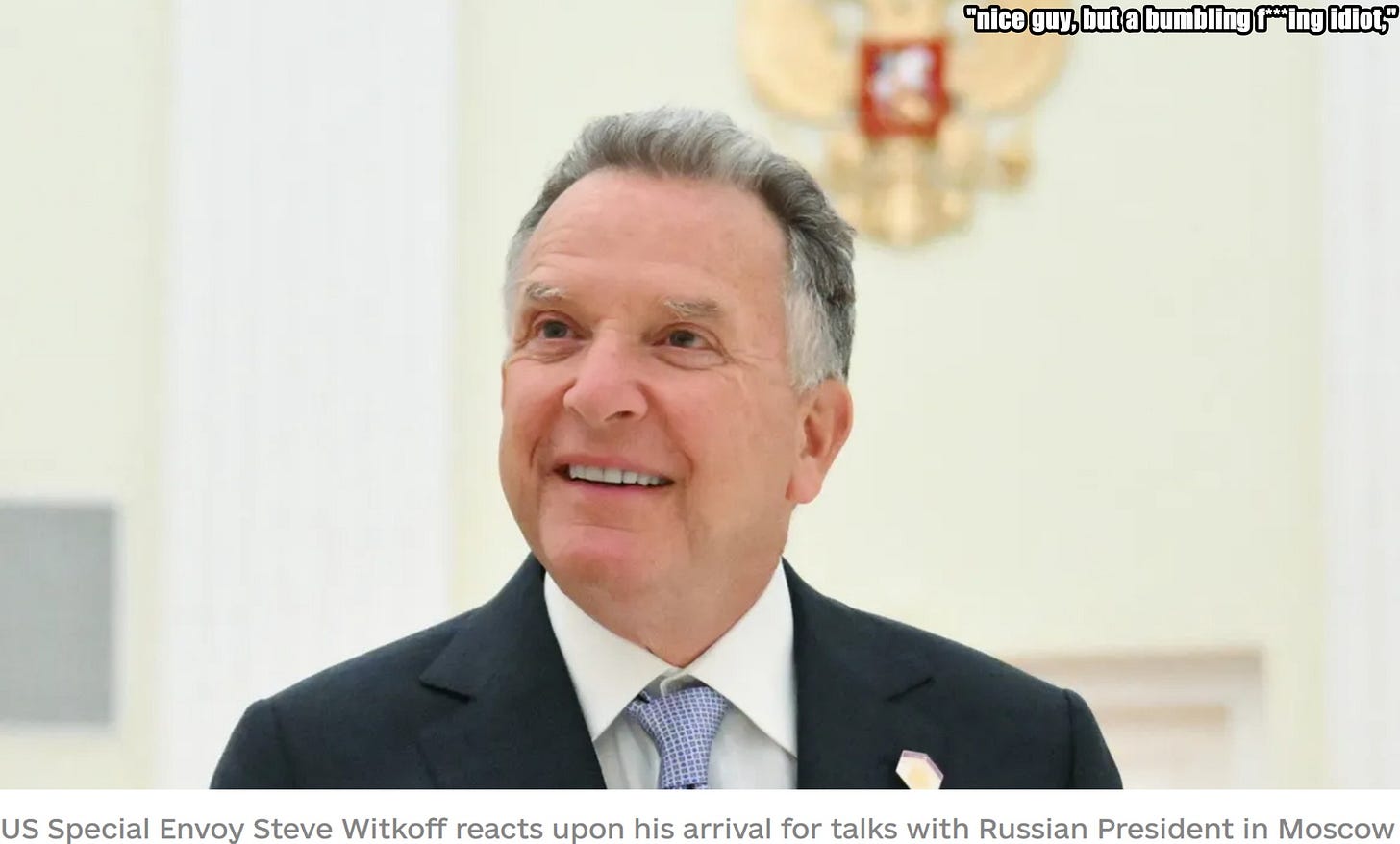Slava Ukraini! In early 2022 I began a Telegram channel aggregating news from a number of sources daily on the war in Ukraine. In June 2023 I began providing a daily draft for the Ukraine War Brief Podcast collecting news from over 70 sources daily, which formed the basis of the script. While the Podcast no longer exists I have continued to make this Brief available for my followers here on Substack for those who wish to keep up with the news from the war.
All the latest news on the Russo-Ukraine War 6 days per week
ALONG THE CONTACT LINE
GSAFU Morning Report
For: May 1, 2025
The General Staff of the Armed Forces of Ukraine in its Operational Information update at 08:00 on May 1 stated that day 1163 of the full-scale invasion of the Russian Federation against Ukraine had begun.
The situation on the line of combat remains tense in some sectors. Ukrainian defenders continue to actively counteract the Russian aggressor, causing them significant losses in personnel, equipment and technology. Exhausting the enemy along the entire front line and continuing to disrupt the plans of Russian occupiers to advance deeper into the territory of Ukraine.
During the past day,196 combat engagements took place.
Over the past 24 hours, the enemy carried out 1 missile strike, 92 air strikes, used 26,77 drones and fired approximately 5,900 artillery shells across the positions of Ukrainian forces and civilians.
Air Force Daily Report
74 ENEMY UAVS SHOT DOWN, 68 SIMULATOR UAVS FAILED TO REACH THEIR TARGETS (LOCATIONALLY LOST)
➖➖➖➖➖➖➖➖➖
On the night of May 1, 2025 (from 7:30 p.m. on Apr 30), the enemy attacked with 5 Iskander-M ballistic missiles from Crimea, 170 strike UAVs and other types of simulator drones from the areas: Kursk, Millerovo, Orel, Primorsko-Akhtarsk - Russia, Chauda - Crimea.
The enemy air attack was repelled by aviation, anti-aircraft missile units, electronic warfare equipment, and mobile fire groups of the Defense Forces of Ukraine.
As of 08:30, it has been confirmed that 74 Shahed attack UAVs (and other types of drones) have been shot down in the east, north, south, and center of the country.
68 enemy drone simulators were lost in location (without negative consequences).
As a result of the enemy attack, the Odessa, Kharkiv, Sumy, Donetsk, and Kyiv regions suffered.
Combat Operations in the Russian Federation
The Institute for the Study of War (ISW), a US based think tank, in its Apr 30 Russian Offensive Campaign Assessment reported that:
Sumy - Kursk Border: Ukrainian forces recently advanced in Kursk Oblast as Russian forces continue efforts to push Ukrainian forces from their limited remaining positions in the area.
Geolocated published on Apr 26 indicates that Ukrainian forces recently advanced southwest of Kucherov (south of Sudzha).
Belgorod Incursion: Russian forces continued offensive operations attempting to drive Ukrainian forces from Belgorod Oblast on Apr 30 but did not make confirmed advances.
The Khortytsia operational-strategic group
(Responsible for the northeastern part of Ukraine. )
Kupyansk Sector:
Russian Armored Assault Across Open Field Fails Near Kupyansk
Russian forces attempted a frontal assault across open terrain near Kupyansk, sending an armored group into a mined field under Ukrainian observation, DeepState analysts reported.
Troops from Ukraine’s 43rd Separate Mechanized Brigade intercepted the column as it crossed the field, using artillery, anti-tank mines, 155-mm cluster munitions, and drones to destroy the vehicles and eliminate the infantry.
According to the brigade, the Russian side lost 38 soldiers, four infantry fighting vehicles, a buggy, a civilian car, and a motorcycle in the failed assault.
The attack took place north of Stepova Novoselivka, an area where Russia has repeatedly tried to push Ukrainian lines in recent weeks, DeepState analysts said.
Such an assault suggests that the Russian army is not abandoning its attempts to capture Kupyansk and is bringing up new forces in this direction.
The territory surrounding Kupyansk bears a resemblance to Kyiv’s geography, with rolling hills and proximity to the Oskil River’s broad floodplains.
Kupyansk itself is located on the right bank of the Oskil River, atop one of these hills, while the left bank remains flat and exposed.
South of the city lies Kupyansk-Vuzlovy, a critical railway settlement that serves as a major transport hub. The very name of the settlement points to its strategic importance, with railway branches converging from five directions.
Kupyansk and Kupyansk-Vuzlovy are essential to Russian plans primarily due to their logistics value. They offer a vital base for deploying military personnel, setting up supply warehouses, and establishing command centers — far more advantageous than being stuck in an open field or forest.
Back in early April, Oleksandr Syrskyi, Ukraine’s Commander-in-Chief, warned that Russia had initiated coordinated offensives on both the Sumy and Kharkiv fronts.
Lyman Sector: Russian forces recently advanced in the Lyman direction.
Geolocated footage published on Apr 30 shows Russian forces waving a flag in western and central Nove (northeast of Lyman), indicating that Russian forces recently seized the settlement.
Additional geolocated footage published on Apr 30 indicates that Russian forces recently advanced in eastern Lypove (just west of Nove) and east of Katerynivka (northeast of Nove).
Toretsk Sector: Ukrainian and Russian forces recently advanced in the Toretsk direction.
Geolocated footage published on Apr 29 indicates that Ukrainian forces recently advanced southeast of Dachne (northeast of Toretsk).
Geolocated footage published on Apr 29 indicates that Russian forces recently marginally advanced to Odeska Street in northwestern Toretsk.
The Tavria operational-strategic group
(Responsible for the central-eastern and southeastern part of Ukraine.)
There have been no major changes to the combat environment since our last report.
The Odesa operational-strategic group
(Responsible for Kherson, Qırım, (also known as Crimea) and the Black Sea.)
There have been no major changes to the combat environment since our last report.
TEMPORARILY OCCUPIED TERRITORIES
Ukraine Destroys Russian Surveillance Radar in Crimea
Tensions are rising in temporarily occupied Crimea following a precision Ukrainian strike on Russian 96L6E air defense radar system near the town of Saky on April 25. Defense Express reports citing the Atesh partisan movement, which includes agents embedded within the Russian military, the strike has caused significant alarm among occupying forces and led to a shift in their operational posture.
The 96L6E radar system, part of Russia's integrated air defense network, plays a critical role in detecting aerial threats, including low-flying aircraft and drones.
Its destruction has reportedly fueled fears among Russian personnel that Ukraine is methodically working to degrade Russia's electronic warfare and radar capabilities in Crimea.
The sources suggest that Ukrainian forces are engaged in a broader effort to "clear the skies" over the peninsula, disabling Russian EW assets as a prelude to launching coordinated missile and drone strikes on military infrastructure.
The report notes that the occupiers are now taking urgent and visible measures to protect remaining systems, indicating both the importance of these assets and a growing sense of vulnerability.
Despite these defensive efforts, the Atesh operatives say they are continuing to track the movement and deployment of radar and EW systems across Crimea. These agents are passing on coordinates and intelligence to Ukrainian forces, potentially enabling further targeted strikes. As the report notes, russian systems are widely distributed across the peninsula, "there are plenty of them in Crimea; they won't miss."
THE HOME FRONT
2 killed, 33 injured in Russian attacks on Ukraine over the past day
At least two people were killed and 33 injured in Russian attacks across Ukraine over the past day, the Kyiv Independent reported citing regional authorities on May 1.
Russian drone strikes in Odesa killed two people and injured 15 others. The attack damaged residential apartment buildings, houses, a supermarket, a school, and vehicles, with fires breaking out in several locations, Governor Oleh Kiper said.
Further north, 13 people, including eight children, were wounded in Kharkiv Oblast, where Russian forces launched 28 attack drones and 20 precision-guided aerial bombs, Governor Oleh Syniehubov reported.
In Kherson Oblast, two people were injured as Russian forces shelled social infrastructure and residential areas, damaging five apartment buildings and 12 houses, Governor Oleksandr Prokudin said.
A 35-year-old woman was injured in Dnipropetrovsk Oblast, where a private enterprise, two houses, an outbuilding, and a car were damaged, according to Governor Serhii Lysak.
Donetsk Oblast reported one injury in Dobropillia, and Zaporizhzhia Oblast also recorded one injury after Russian forces launched 458 strikes on 12 settlements, Governor Ivan Fedorov said.
"For over 50 days now, Russia has been ignoring the American proposal for a full and unconditional ceasefire," President Volodymyr Zelenskyy wrote.
He added that Ukraine had also proposed halting strikes on civilian infrastructure and establishing "lasting silence" across land, sea, and air.
"Russia has responded to all this with new shelling and new assaults," he said.
Ukraine cuts power imports by 31% in April vs March
Ukraine, whose power system has been under constant Russian missile and drone attacks, reduced electricity imports by 31% in April after an 11% increase in March thanks to warm weather, Reuters reported citing Ukrainian ExPro consultancy on Thursday.
The consultancy said Ukraine imported 187 gigawatt hours in April against 272 GWh in March.
ExPro said most of the electricity - 44% - was supplied from Hungary. Ukraine also imported electricity from Slovakia and Poland.
Ukrainian officials have said the Russian attacks deprived Ukraine of half of its generating capacity, some of which Kyiv has managed to restore.
Ukrainian energy minister German Galushchenko said the European Union increased the maximum volume of power that Ukraine can export to the EU to 650 Megawatt hours from the current 550 Megawatt hours.
"Ukraine currently trades electricity with all its neighbouring European countries - Slovakia, Romania, Hungary, Poland and Moldova. Every spring, exports increase, while imports decrease," Galushchenko said on Facebook.
Ukraine started large power exports to EU before the Russian invasion in 2022 but then switched it off after Russia damaged Ukrainian power generating facilities.
RUSSIAN WORLD
Russia Triples 2025 Budget Deficit Forecast to 1.7% of GDP
Russia has more than tripled its 2025 budget deficit forecast to 1.7% of GDP, up from a previous estimate of 0.5%, citing falling oil prices triggered by the Trump administration’s escalating tariff war, the Moscow Times reports.
The Finance Ministry had initially projected a 2025 deficit of 1.17 trillion rubles ($14.3 billion), or 0.5% of GDP. Its latest revision, published late Wednesday, now expects the deficit to reach 3.79 trillion rubles ($46.2 billion), or 1.7% of GDP.
Budget revenues are forecast to drop to 38.5 trillion rubles from 40.3 trillion rubles, while spending will rise to 42.3 trillion rubles from 41.5 trillion rubles, largely due to record military expenditures to support Russia’s war in Ukraine.
The 2025 shortfall mirrors the 2024 budget deficit, which also amounted to 1.7% of GDP, or 3.49 trillion rubles. This year’s projected deficit is Russia’s second-largest in nominal terms since the pandemic year of 2020, when the gap reached 4.1 trillion rubles ($55 billion).
The ministry also cut the average oil price in its budget calculations to $56 per barrel from $69.70, lowering projected 2025 oil and gas revenues to 8.3 trillion rubles ($101.4 billion), or 3.7% of GDP — down from 10.94 trillion rubles ($114 billion), or 5.1% of GDP.
Finance Minister Anton Siluanov said defense remains a top budget priority.
“Everything that’s planned in the budget... will be implemented regardless of external conditions and factors,” he said in a statement issued late Wednesday.
RELATED INTERNATIONAL NEWS
Ukraine, US sign minerals deal sought by Trump.
Ukraine and the U.S. on Wednesday signed a deal heavily promoted by U.S. President Donald Trump that will give the United States preferential access to new Ukrainian minerals deals and fund investment in Ukraine's reconstruction, Reuters reports.
The two countries signed the accord in Washington after months of sometimes fraught negotiations, with uncertainty persisting until the last moment with word of an eleventh-hour snag.
The accord establishes a joint investment fund for Ukraine's reconstruction as Trump tries to secure a peace settlement in Russia's three-year-old war in Ukraine.
The agreement is central to Kyiv's efforts to mend ties with Trump and the White House, which frayed after he took office in January. Ukrainian officials have hoped that the deal would ensure continued U.S. support for Ukraine's defence against Russia.
U.S. Treasury Secretary Scott Bessent and Ukrainian First Deputy Prime Minister Yulia Svyrydenko were shown signing the agreement in a photo posted on X by the Treasury, which said the deal "clearly signals the Trump Administration's commitment to a free, sovereign, prosperous Ukraine."
Svyrydenko wrote on social media that the accord provides for Washington to contribute to the fund.
"In addition to direct financial contributions, it may also provide NEW assistance - for example air defense systems for Ukraine," she said. Washington did not directly address that suggestion.
The U.S. has been Ukraine's single largest military donor since Russia's 2022 invasion with aid of more than 64 billion euros ($72 billion), according to the Kiel Institute in Germany.
Before the signing, Trump repeated on Wednesday that the U.S. should get something for its aid to Kyiv, thus the effort to secure a deal for Ukraine's plentiful deposits of rare earth minerals.
In announcing the deal, the U.S. Treasury said the partnership recognized "the significant financial and material support that the people of the United States have provided to the defense of Ukraine since Russia's full-scale invasion."
Svyrydenko said the accord allowed Ukraine to "determine what and where to extract" and that its subsoil remains owned by Ukraine.
Ukraine is rich in natural resources including rare earth metals which are used in consumer electronics, electric vehicles and military applications, among others. Global rare-earth mining is currently dominated by China, which is locked in a trade war with the U.S. after Trump's sharp tariff increases.
Ukraine also has large reserves of iron, uranium and natural gas.
Svyrydenko said Ukraine has no debt obligations to the United States under the agreement, a key point in the lengthy negotiations between the two countries.
The deal also, she said, complied with Ukraine's constitution and Ukraine's campaign to join the European Union, key elements in Ukraine's negotiating position.
The minerals deal and U.S. peace efforts have been negotiated separately but reflect Washington's approach to Ukraine and Russia. Trump has upended U.S. policy by softening the U.S. stance toward Russia and sometimes falsely blaming Ukrainian President Volodymyr Zelenskiy for the war.
U.S. peace proposals have called for recognition of Russia's claim to Crimea, which it seized from Ukraine in 2014, and potentially four other Ukrainian regions. Zelenskiy has said Kyiv would never do so because it would contravene Ukraine's constitution.
"Importantly, the Agreement sends a signal to global partners that long-term cooperation with Ukraine - over decades - is not only possible but reliable," Svyrydenko said.
A draft of the U.S.-Ukraine agreement seen by Reuters earlier on Wednesday showed Ukraine secured the removal of any requirement for it to pay back the U.S. for past military assistance, something Kyiv had staunchly opposed.
The draft did not provide any concrete U.S. security guarantees for Ukraine, one of its initial goals.
Separately, Ukraine has discussed with European allies the forming of an international force to help ensure Ukraine's security if a peace agreement is reached with Russia.
Witkoff's negotiation approach with Putin sparks concern in White House.
U.S. President Donald Trump's Special Envoy Steve Witkoff is causing concern within the White House over his unconventional approach to high-stakes diplomacy with Russia and Iran, the New York Post reported on April 30, citing unnamed sources.
Witkoff, who has emerged as Trump's de facto personal envoy to Russian President Vladimir Putin and concurrently handles Middle East affairs, has participated in solo meetings with foreign leaders, bypassing typical diplomatic protocol, according to the report.
According to New York Post sources, Witkoff has even used Kremlin translators during discussions with Putin — a breach of standard U.S. diplomatic practice.
Another source described Witkoff as a "nice guy, but a bumbling f***ing idiot," adding: "He should not be doing this alone."
Ahead of his April 25 meeting with Putin, Witkoff greeted the Russian president informally and without the customary entourage of advisers, military officials, or experts that typically accompany senior U.S. negotiators.
In contrast, Putin was joined by his aide Yuri Ushakov and Russian Direct Investment Fund head Kirill Dmitriev.
Witkoff's posture has alarmed officials because he frequently echoes Putin's narratives while reportedly lacking a clear understanding of Ukraine's position. The role of special envoy for Ukraine remains assigned to Keith Kellogg.
Following an April 11 meeting with Putin in St. Petersburg, Witkoff said discussions focused on a potential peace deal concerning "five territories."
Though he did not name them explicitly, he appeared to reference Crimea, annexed by Russia in 2014, and the partially occupied Donetsk, Luhansk, Zaporizhzhia, and Kherson oblasts, which Moscow claimed in 2022.
"I think we might be on the verge of something that would be very important for the world at large," Witkoff said in an April 14 interview with Fox News.
MILITARY & TECH
Rheinmetall and Lockheed Martin to Expand Cooperation to Boost Missile Production in Europe
The German conglomerate Rheinmetall and the American company Lockheed Martin have agreed to expand their cooperation, aiming to increase the production of missiles and ammunition in Europe. Militarnyi reported citing an announcement on the German conglomerate’s website.
The companies signed a memorandum that envisions the creation of a European center of excellence for the production and distribution of missiles and missile systems, with the aim of strengthening Europe’s security and independence.
The center of excellence, led by Rheinmetall, will operate primarily in Germany and other European countries.
The companies have already begun identifying the next steps for establishing this center, and the project’s implementation will depend on approval from the U.S. and German governments.
Thanks to this project, the defense companies will join forces to work together in the growing military market for the benefit of their clients: Rheinmetall, with access to the markets of many countries as a leading systems supplier in Europe, and Lockheed Martin, as a leading global manufacturer of missiles and missile systems.
“This is a step toward helping our European customers meet their NATO commitments. By combining Rheinmetall’s extensive experience with Lockheed Martin’s advanced missile technologies, we are creating a strong foundation to meet evolving security demands,” Ray Piselli, Vice President of International Affairs at Lockheed Martin, stated.
In turn, Rheinmetall CEO Armin Papperger noted that the American company Lockheed Martin and the German company Rheinmetall complement each other well thanks to their specific skills and technological expertise.
“In the growing European market, we aim to play a significant role in the production of missiles and ammunition, for which we see considerable demand. Rheinmetall will be involved not only in sales but also with a substantial share in manufacturing,” he added.
Lockheed Martin has been a partner of German industry for over 50 years and continues to strengthen cooperation with companies like Rheinmetall, which possess advanced technological capabilities.
For example, as part of the international supply chain for the fifth-generation F-35 Lightning II fighter jet, Rheinmetall is set to begin production of the first of approximately 400 F-35A center fuselage sections in July 2025.
In 2023, Rheinmetall and Lockheed Martin joined forces to jointly develop the GMARS multiple launch rocket system to meet the growing demand for long-range rocket artillery. It was first unveiled to the public in Paris in the summer of 2024 at the Eurosatory exhibition.
That’s it for today’s Brief folks if you would like to keep up with events in Ukraine daily please consider subscribing, it’s free!


